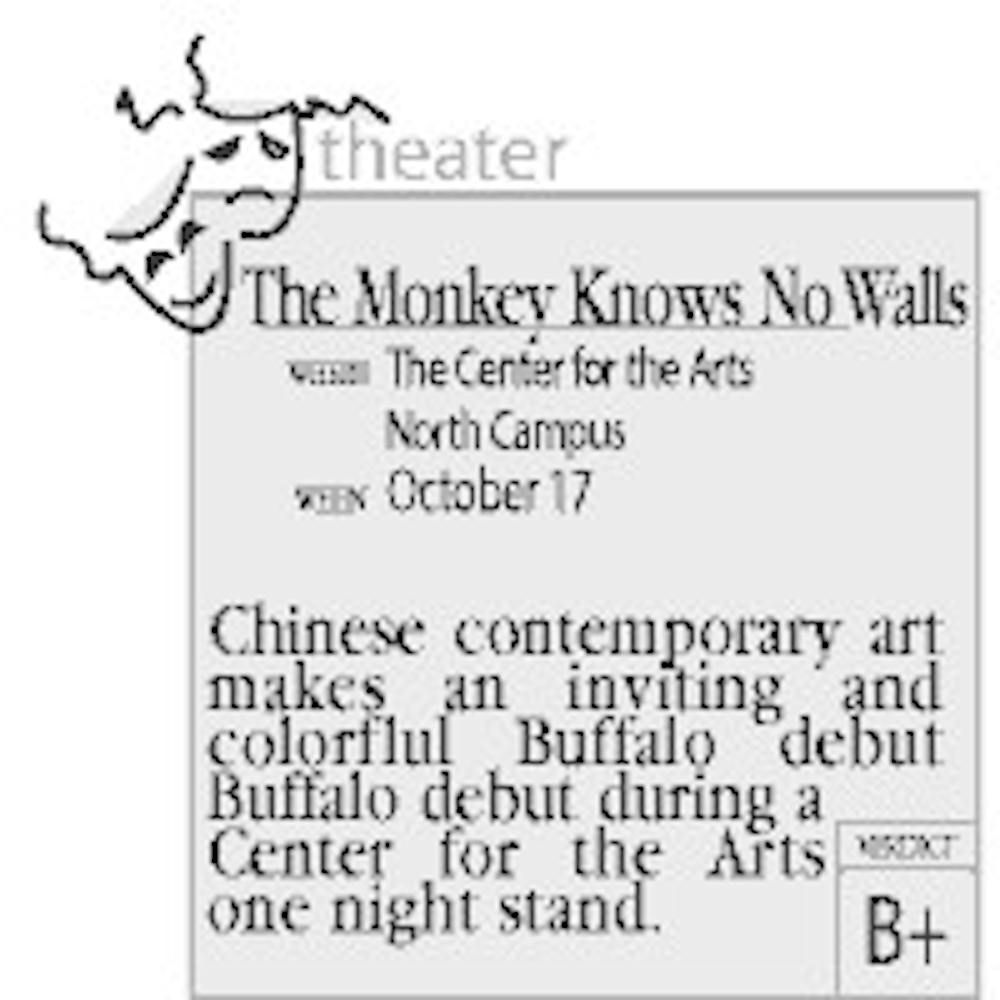The Monkey King, Green Dragon, Heavenly Maiden and other celestial beings descended upon the Center for the Arts Friday night as the Beijing Opera Monkey Troupe presented "The Monkey Knows No Walls."
"The Monkey Knows No Walls" revolves around the adventures of the Monkey King, the mischievous hero of the popular Chinese legend "Journey to the West." In conjunction with the "Chinese Maximalism" exhibition - the first exhibition of Chinese contemporary art in Buffalo - the function of the two events is to bring Chinese art forms that are often overlooked by the majority of the American public into the limelight.
"Let us introduce you to a very beautiful art form," said Ghaffar Pourazar, artistic director and performer at the Beijing Opera Monkey Troupe, in a brilliant yellow costume decorated with intricate embroidery while also sporting the exaggerated face paint of a monkey. Pourazar specializes in directing non-Chinese plays to be performed in the Beijing Opera style. He has attached his name to such plays as "A Midsummer Night's Dream" in Beijing Opera style and the Monkey King's "Havoc in Heaven" in English.
The first segment of the presentation was an introduction to Chinese opera, more specifically Beijing opera, for the audience. The four-member cast appeared fully dressed in their impressive stage costumes and sat onstage to complete their semi-finished makeup while a film on Chinese opera by the National Geographic was shown.
"It is easy to see where Kung Fu movies get their inspiration from," said the reporter in the film, as she was awe-struck by the high-tempo and breathtaking moves in Chinese opera.
"Martial arts are meant to hit the opponent. Beijing Opera is meant to hit the audience," said Pourazar. This statement was followed by a short demonstration of high kicks and flips to whet the audience's appetite for action.
Pourazar listed the basic elements of singing, acting, stage fighting, acrobatics, face painting and costumes in Chinese Opera. He went on to explain the elaborate choreography of dance and martial arts with music.
"Every beat corresponds to a movement. Every actor should be a puppet on a string," said Pourazar. "The music changes with the actors and the actors changes with the music. The music is not dead."
At this point, members of the audience were invited to come onstage to learn from the performers and later were given the chance to participate in the show. The volunteers were just required to strike a seemingly simple "mountain" stance, which turned out to be rather challenging; one volunteer looked more like he was saluting than trying to pose gracefully.
The performance begins as the Monkey King enters the Dragon King's Sea Palace in search of a suitable weapon. The Monkey King resorts to trickery to gain entrance in order to claim the 36,000-pound "Needle of the East Seas." This results in a battle between the Monkey King, the Dragon King and his troops.
During the second scene, "Havoc in Heaven," the Monkey King gate-crashes a Heavenly banquet. His decision to incite trouble is sparked by his omission from the guest's list. Trouble ensues as the celestial army is set upon him.
The display of weapon mastery caused the audience to applaud continuously during the performance. The timing of the nonstop action was impeccable as the opponents matched moves perfectly.
The set was threadbare except for the occasional table or chair, which makes the audience focus their attention on the decorated costumes and sophisticated ornaments of the performers. Both the costumes, in the bright shades of yellow, green and pink, and the contrasting colors of black, white and pink face paints stood out from the empty stage.
The expressions were highly exaggerated and the unique face paints of the characters magnified their effects. Although the scene was performed in Chinese, the expressions of comedy, anger and cheekiness were apparent as the Monkey King toyed around as the furious Dragon King and his troops tried to attack him.
The language did not sound like prose being read. Instead the rhythmic words were more like verses of a song. There were English interjections that helped the audience follow the story and induced laughter as the cheeky Monkey King cried "Bye bye!" while exiting the stage.
Pourazar's contemporary operas serve to bridge the gap between the past and the present. They transcend language barriers to make the art more accessible. "The Monkey Knows No Walls" was an opportunity to witness a wonderful fusion of language and culture in a rare form of art.
"It is a chance to see something so magnificent and yet known so little of," said Thomas B. Burrows, director of the CFA.





